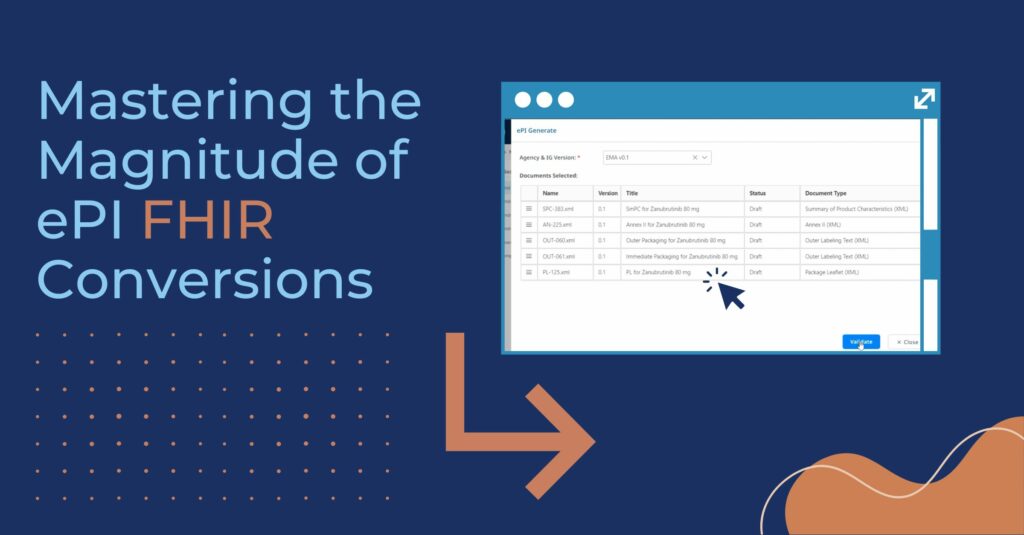
Traditionally, region-specific Health Authorities dictate the format of, and information contained within pharmaceutical labels for any given geography. However, all EU pharmaceutical labels will soon need to be converted from their current health authority-approved format into the ePI FHIR format –and other countries are likely to follow.
Vulcan, an HL7 accelerator dedicated to connecting clinical research and healthcare, recently published an implementation guide for ePI FHIR. Similarly, the EMA announced that it has begun accepting FHIR outputs on a trial basis.
Scaling to meet these requirements can be a cumbersome, expensive, and time-consuming process for pharmaceutical companies. But it doesn’t have to be. Outsourcing conversions to partners with automation capabilities can result in time and cost efficiencies while ensuring the integrity of outputs across products and languages.
The Primary Challenge: Magnitude of Conversions
According to an R&D Lead at Pfizer, the only way ePI will be successful is to reach “critical mass,” or 80% ePI’s, within two years from EMA’s FHIR ePI pilot ending in July 2024.
Identifying Impacted Labels and Translations
One of the biggest challenges with converting global labels to the ePI FHIR format will be scheduling and executing the sheer number of conversions that need to occur. Not only will pharmaceutical companies need to identify impacted SKUs and convert product source documentation (i.e., CCDS) into the correct format, but they will also need to change all label document types and translations as well, compounding the number of required conversions.
For example, a pharmaceutical company with 50 labels that require conversions across 4 document types will have to perform anywhere from 5,000-10,000 conversions, assuming the labels need to be translated into 25-50 languages (representative of the territories where the product is sold).
Manually converting existing global labels to the FHIR standard format will not only put a significant strain on existing content authoring resources but it can also result in low-quality health authority submissions and costly transcription errors .
Scaling Resources for Conversions
Additionally, pharmaceutical companies are concerned about how they are going to scale up (or down) as requirements and conversion volumes change over time.
For example, a pharmaceutical company would not want to commit to executing an initial 5,000 conversions and then wind up behind schedule on conversions for other geographies because they do not have resources available to complete them.
Similarly, hiring additional conversion resources is unattractive because hiring and training are expensive, and these resources may not have a role at the company once the conversions are completed.
Together, these outcomes pose significant barriers to pharmaceutical companies efficiently and cost effectively performing conversions in house, existing product extensions, merger and acquisitions increasing the SKU’s and newly formulated approved products reaching the market.
The Solution: Outsource Conversions
To increase quality, save time, and reduce costs associated with manual copy and pasting of data, life sciences companies should consider outsourcing their FHIR conversions.
Outsourcing conversions can alleviate staffing challenges, including hiring and training headcount, as it minimizes the number of ePI FHIR specialists required in-house. Leveraging a partner also provides the flexibility to scale up and down dedicated resources as conversion requirements change and volumes increase due to product extensions, mergers and acquisitions (increasing number of SKUs), and commercialization of new products.
Outsourcing can reduce the timeline to generate FHIR outputs, as more conversions can be performed at any given time, allowing life sciences companies to capitalize on industry-driven improvements and best practices more efficiently.
When outsourcing, pharmaceutical companies can also take advantage of partners’ proprietary automation capabilities that can reduce the time required for each conversion and maintain the integrity of any foreign-language translations – pharmaceutical companies could thereby avoid large capital approvals and investments associated with building and/or implementing automation technologies to assist with the process.
Cost-wise – leveraging partners that can offer on-demand services and fixed fees can help drive the cost per conversion down significantly as the number of conversions increases.
Outsourcing: What you get in a partner
At Glemser, we follow a general conversion process, while leveraging our deep industry knowledge and proprietary automation tools to ensure output quality, compliance, and scalability.
For example, Glemser leverages artificial intelligence (AI) capabilities to ingest existing labels (from the client portal) in the language that they are in. We then instantaneously convert any unstructured data to indexed structured data from source repositories and append tags and additional metadata. Once the appropriate tags are appended, an XML is sent for final output rendering (i.e., FHIR, SPL, PharmaLedger formats).
Using these tools and capabilities not only speeds up the document ingestion and formatting processes, but it also ensures that all data (i.e., charts and graphs) and translations are transformed into the correct format from the get-go.
To validate the transformation, your partner should execute detailed, side-by-side quality checks. A human should be kept in the loop to perform quality checks, resolve deviations as required, re-perform quality checks, and confirm the compliant output before receiving the final product. Critically, all confirmed ePI FHIR outputs should be stored on a controlled system to facilitate easier and faster updates as the need arises.
Our process and proprietary automation tools can reduce the time it takes to convert a label to 4-5 hours, down from the typical 10-12 hours, saving pharmaceutical companies both time and money per conversion.
Ready to start preparing for ePI FHIR? Contact Glemser today to get started.


